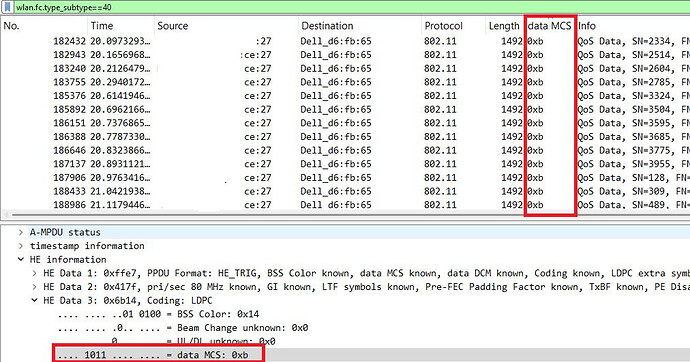Ever wondered why some Wi-Fi connections fly while others crawl, even when connected to the same network?
The answer often lies in a crucial value: MCS (Modulation and Coding Scheme).
![]() What is MCS?
What is MCS?
MCS defines how data is encoded and transmitted over Wi-Fi.
It combines:
![]() Modulation type (BPSK, QPSK, 16-QAM, 64-QAM… up to 4096-QAM)
Modulation type (BPSK, QPSK, 16-QAM, 64-QAM… up to 4096-QAM)
![]() Coding rate (how much error correction is applied)
Coding rate (how much error correction is applied)
![]() Number of spatial streams
Number of spatial streams
In simple terms:
![]() Higher MCS = Higher data rates
Higher MCS = Higher data rates
But also requires better signal quality (SNR) and less interference.
![]() How MCS Has Evolved Across Wi-Fi Standards:
How MCS Has Evolved Across Wi-Fi Standards:
![]() Wi-Fi 4 (802.11n)
Wi-Fi 4 (802.11n)
• MCS Index: 0–7
• Max Modulation: 64-QAM
• Spatial Streams: Up to 4
![]() Wi-Fi 5 (802.11ac)
Wi-Fi 5 (802.11ac)
• MCS Index: 0–9
• Max Modulation: 256-QAM
• Spatial Streams: Up to 8
![]() Wi-Fi 6 (802.11ax)
Wi-Fi 6 (802.11ax)
• MCS Index: 0–11
• Max Modulation: 1024-QAM
• Spatial Streams: Up to 8
![]() Wi-Fi 7 (802.11be)
Wi-Fi 7 (802.11be)
• MCS Index: 0–13
• Max Modulation: 4096-QAM
• Spatial Streams: Up to 16
![]() Why Does MCS Matter?
Why Does MCS Matter?
• It affects speed, latency, and airtime efficiency
• Lower MCS = slower data rates and longer airtime per frame
• A well-optimized network helps clients maintain higher MCS values
![]() Real-World Example:
Real-World Example:
User A, near the AP ➜ MCS 11 ➜ Smooth HD streaming
User B, behind two walls ➜ MCS 3 ➜ Slow speeds, buffering, retries
Curious about MCS Index?
![]() You can verify actual MCS values using wireless sniffer tools like Wireshark or Omnipeek.
You can verify actual MCS values using wireless sniffer tools like Wireshark or Omnipeek.
I’m sharing wireless sniffer logs showing real-time MCS index values for better understanding what MCS index the client is using—very helpful during performance or roaming troubleshooting!
![]() Your Turn:
Your Turn:
What MCS values do you typically see in your deployments?
Do you include MCS analysis in your Wi-Fi troubleshooting workflow?
LinkedIn: ![]()
